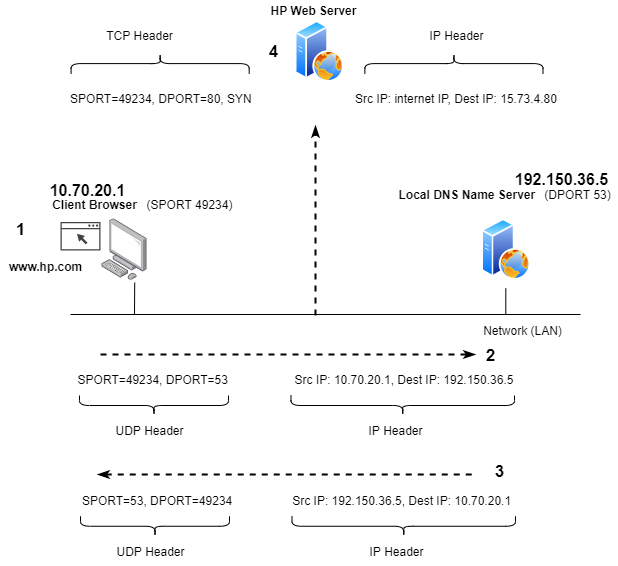What is a dns?
-
Wikipedia link for DNS: https://en.wikipedia.org/wiki/Domain_Name_System
There is a lot in depth information in the link.
Also see: Inventor of the Domain Name System (DNS).
Domain Name System (DNS) the overall concept of the function. Commonly mistaken to be the acronym for Domain Name Server.
As the wiki link shows, the correct way to refer to the server portion is, DNS Name Server. Just to add to the terminology you have Domain Name Space, (which could also have an acronym of DNS, but that is not the case) a tree structure where resource records are stored, Resource records are the information held for the domain name(s)
When someone enters the URI into a browser. The browser has to first look up the server portion of the URI and it uses DNS to do this.
See the diagram below, illustrates a local DNS lookup, from internal enterprise DNS name servers, the DNS caches previous DNS requests for a period of time.
1.) Client, user types in URI www.hp.com in the browser, browser initiates a DNS request.
2.) The local DNS name server receives the request, does a DNS lookup.
3.) The local DNS name server finds the address of www.hp.com and sends it back to the client.
4.) Client received the reply from DNS name server and established a TCP connection to www.hp.com web server.
The well known ports here are DNS Port 53 and HTTP Port 80

© Lightnetics 2024